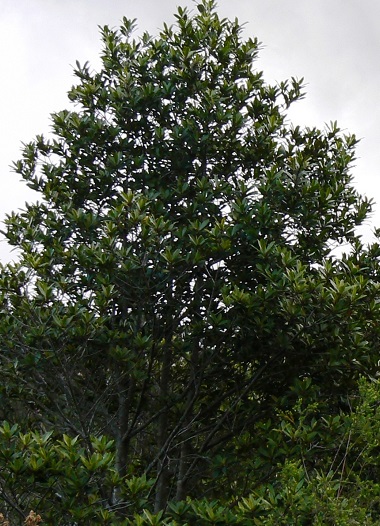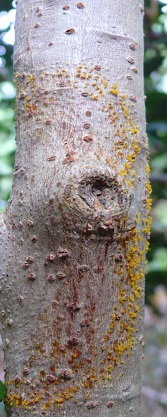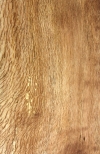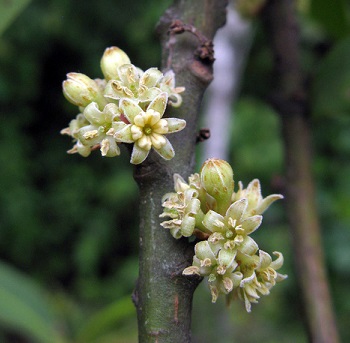Cape Beech – Rapanea melanphloeos
(Boekenhout)
Cape Beech occurs from the Cape Peninsula to East Africa.
The Tree
It is a small to large evergreen tree, usually 4-8m tall, but can be up to 20m.
In mature trees, the bark is whitish, pinkish, to grey, with raised corky spots, becoming darker, 
The simple, alternate, leathery leaves are a dull dark green on top and a paler green underneath, usually clustered near the ends of the branches. The margins are entire and rolled under with no stipules. The leaf stalks are thick and reddish-purple, sunken on the upper side of the leave and prominent below. They are grooved above. When a leaf is picked, a brownish latex may ooze from the broken base.
The small, fragrant, star-shaped flowers occur in clusters on bare twigs below the leaves, or from old leave scars – about 5mm in diameter. The sexes may be separate, usually on the same tree but may be on different trees. May-August, sometimes until December.
The fruit is a small, round berry which is green at first, ripening through white to become purplish, usually with only one seed – up to 5mm in 
The fruit is eaten by birds and wild animals. Bees and other insects are attracted to the flowers, which in turn attract birds.
The bark and roots are used in traditional medicine.
Properties
The wood is hard and moderately heavy with a very attractive grain. It is almost white when freshly sawn, but darkens with exposure. The heartwood is pinkish- to reddish-brown and the white sapwood is straw-coloured and not well-defined. The texture of the wood is coarse and even and the grain is straight. It has a beautiful irregular patter of dark flecks and bands to produce a characteristic silver grain figure when quarter sawn.
It saws easily, planes and turns well and is easy to glue and once polished, its silky glassy grain is enhanced. It takes all finishes and it peels easily for decorative veneer. Spalted Cape Beech is very attractive and sought after by wood users.
Using the Wood
Cape Beech is suitable for domestic flooring, furniture, cabinetry, joinery, interior trimming, decorative veneer, decorative boxes, musical instruments (particularly
in the making of violins), carving and turnery.
Green weight: 1150 kg/m3
Dry weight: 735 kg/m3
Source: Trees of the Garden Route / Elna Venter
Southern African Wood / Stephanie Dyer, Barry James & Danielle James
If you are looking to buy wood, please click here to visit our Timber slab sales page.



